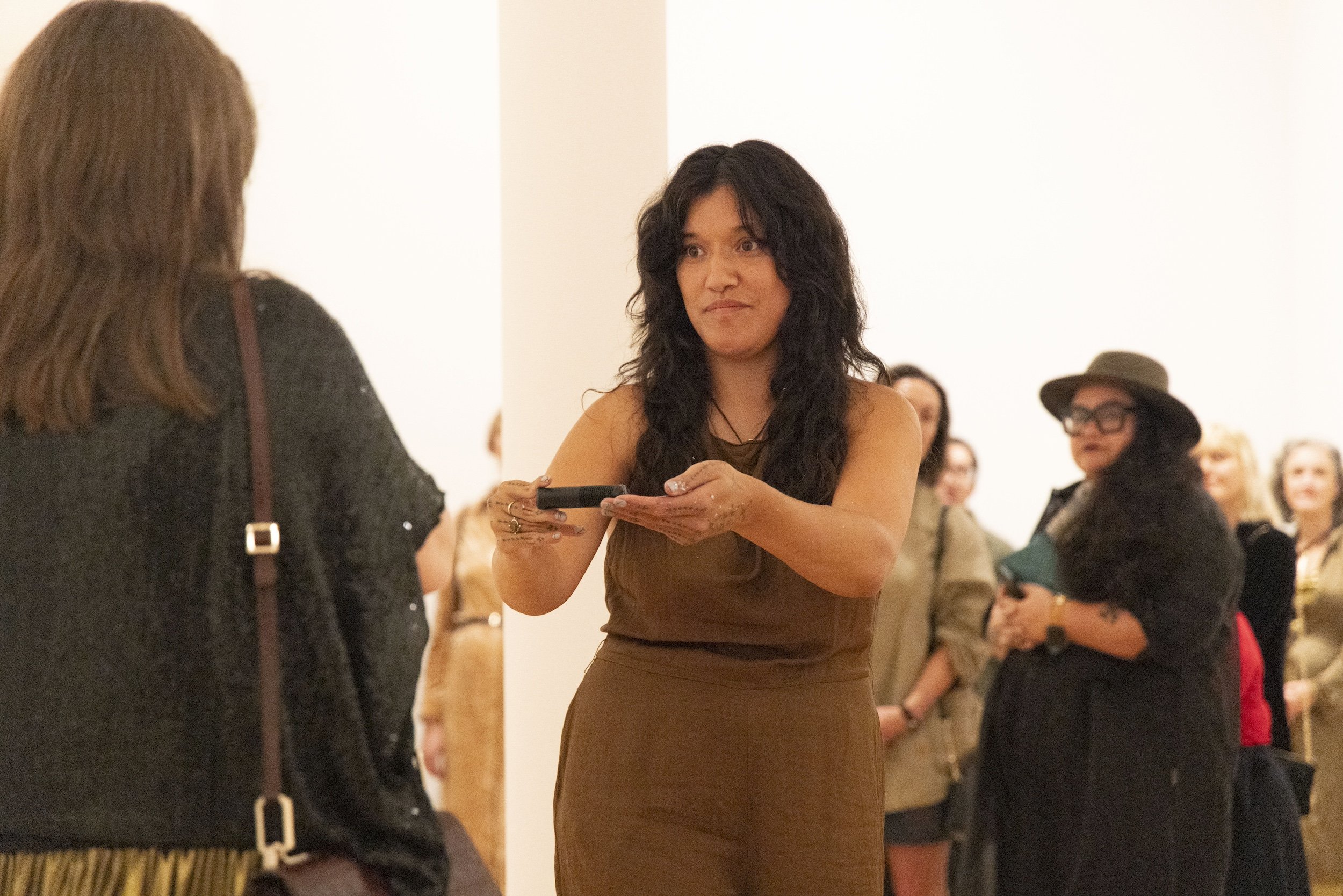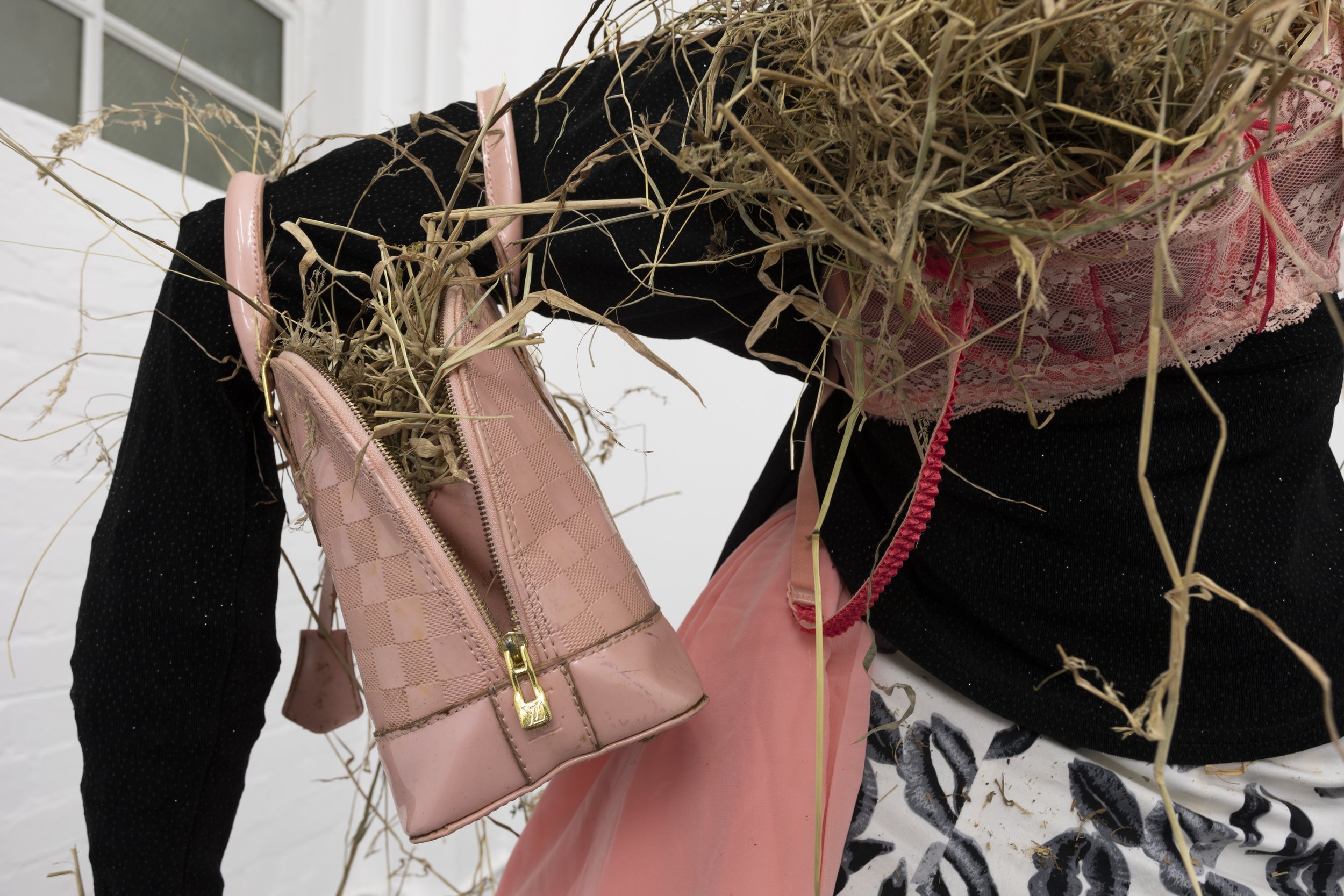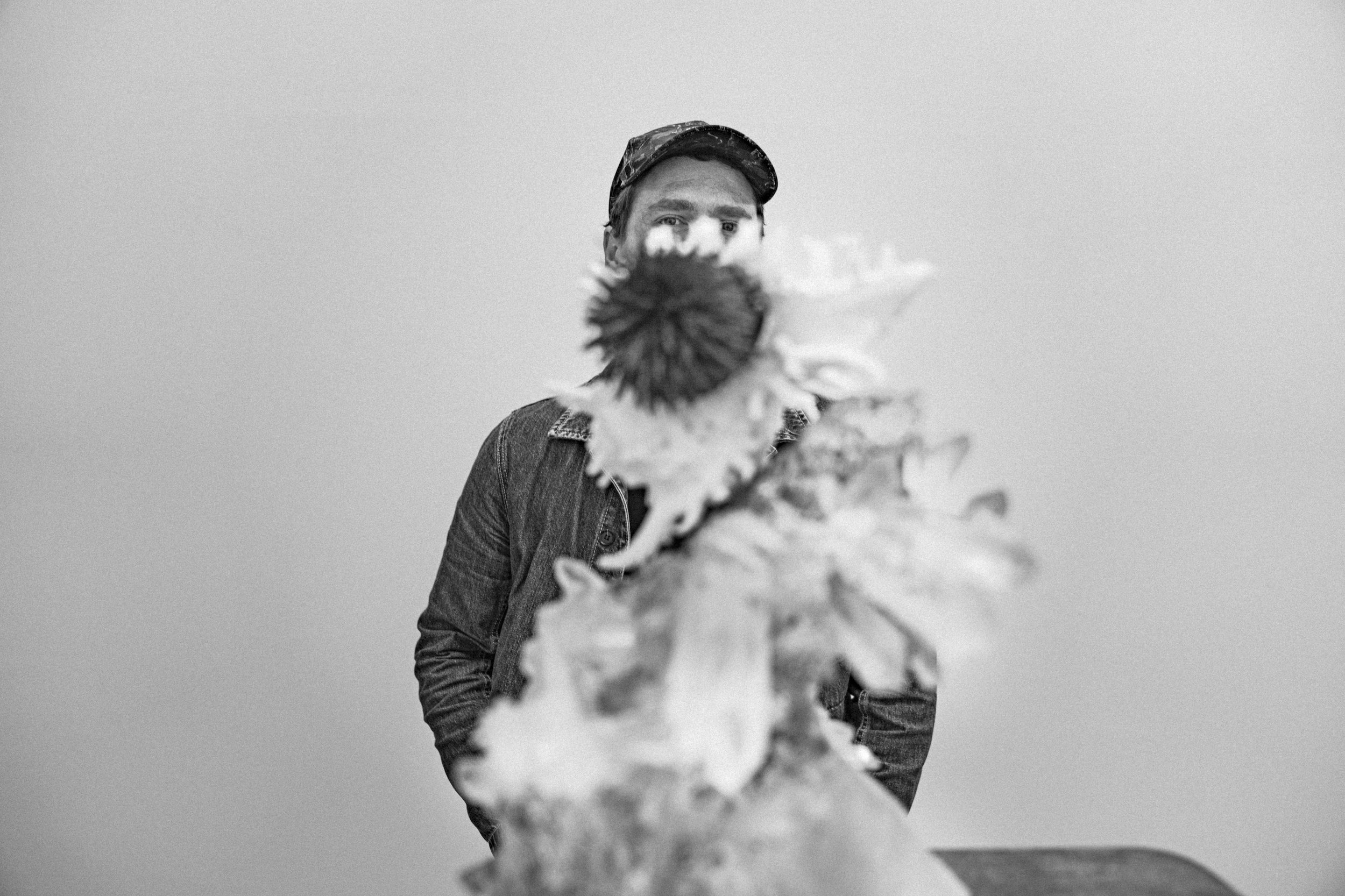Braided Rivers
We speak to Tia Barrett about her installation He Pounamu Ko Āu, currently on view as part of the group exhibition Te Mōteatea a Maumahara at Wairau Māori Art Gallery, 10 August – 24 November 2024.
The exhibition explores the idea of remembering through the lens of cultural identity and resilience. The act of remembering is not just about recalling past moments from individual and collective histories; it is also a form of resistance and revitalisation. The process of forgetting, whether active or subconscious, is for Māori a process shaped by complex and sometimes traumatic layers of colonisation and displacement. Seen through the works of four artists, this exhibition highlights the power of memory to shed light on histories once forgotten.
He Pounamu Ko Āu draws a conceptual analogy between the formation of pounamu and your experiences as a wahine Māori in Aotearoa’s education system. Can you speak to this connection?
The formation of pounamu was used as a lens within my work to help me visualise how I saw myself going through a systematic struggle as a brown Māori wahine in a world not designed for me that made me feel invisible but rising above it. Similarly, pounamu has had to overcome many intense and exhausting processes to be formed and rise to the surface of papatūānuku to be seen. Therefore, my connection is that He Pounamu ko Āu—I am pounamu. Kua tae te wā hei noho pounamu ki ā Papatūānuku, which translates into, now I sit as pounamu on Papatūānuku. This passage is from the mōteatea I composed to accompany my moving image, articulating the mana and strength it takes to overcome struggle and find mauri ora (wellbeing). Furthermore, each pounamu stone, or bolder formed, has its own characteristic from its journey. Expressing that the distinctiveness of each pounamu ever created is the same as we as Ngāi Tahu, and our connection to what it is to be Indigenous and Māori. I am the pounamu, and the pounamu is me, and looking through the lens of pounamu as a creative methodology has healed the struggles I experience as a brown Māori wahine in our education system.
Tia Barrett, He Pounamu Ko Āu, 2022, river stone and video installation. Master of Visual Final Exhibition, St Paul Gallery, AUT, Tāmaki Makaurau
On the ground in front of the moving image projection, you have arranged several islands of river stones, connoting the braided rivers that connect the maunga of Te Wai Pounamu with the surrounding oceans. It’s a small gesture, but one that resists the ways geographies and landscapes—particularly those of the South Island—are typically represented through lens-based media. What are the practices, conversations or relationships that have shaped your thinking around bringing place into the artwork?
The braided river is a distinctive identity marker for the Te Waipounamu landscape and those who whakapapa (genealogy) Ngāi Tahu. As Ngāi Tahu, many pūrākau relate the braids as our whakapapa interweaving into the landscape, and our rivers are where our pounamu are found. Therefore, I thought it was important to nod to significant tohu within our South Island environment to express the beauty and mana of the land that I whakapapa to. The braids also remind me of all my tūpuna who came before me, connecting me to Te Waipounamu and that their strength still runs through my veins, like how our rivers run through our landscapes. An immense amount of healing comes from that type of thinking, and that’s what I want to emulate in the installation. The methods I took to incorporate the braids into my work were hikoi, titiro, whakarongo and wānanga (walk, observe, listen, and allow knowledge sharing) with the rivers and their landscape. I see our taiao (environment) as a creative partner. It is a living entity. Therefore, its contribution is expressed through tauutuutu (reciprocity) and captured through the camera lens.
You’re sharing space in this exhibition with Tia Ranginui, Kura Te Waru Rewiri and Wayne Youle. Has this context and company given you any new insights on your own work?
In this exhibition with Tia, Kura, and Wayne, I have gained a deeper understanding of the different and important intersections of what it is to be Māori today. Our works are multifaceted, but the common thread that binds us is that our stories are of identity, belonging, and truth-telling through our lens.
Te Mōteatea a Maumahara also centres resistance and revitalisation. What do those terms mean to you, and what does it look like to practice with them?
My great, great, great grandmother Amiria Puhirere Hokianga was a well-known Ngāti Irakehu mana wahine leader and mōteatea/ waiata composer. However, the practice slowly diminished from my whakapapa by the time my Pōua was born; he grew up in an era where there was a cloak of shame to be Māori, and our people were beaten for speaking our reo, let alone singing it. He never spoke a word of reo around me when he was alive. Therefore, He Pounamu Ko Āu actively exists within the space of resistance to colonisation and has revitalised the art of mōteatea (sung Māori poetry) back into my whānau and me. It took whānau to help me write the mōteatea that is integrated into He Pounamu Ko Āu. Now, having it invited and visible in exhibitions such as Te Mōteatea a Maumahara and being sung by my irāmutu (nieces and nephews), the practice of mōteatea lives again in my whakapapa.
Tia Barrett, He Pounamu Ko Āu, 2022, river stone and video installation. Master of Visual Final Exhibition, St Paul Gallery, AUT, Tāmaki Makaurau
Tia Barrett, He Pounamu Ko Āu, 2022, river stone and video installation. Master of Visual Final Exhibition, St Paul Gallery, AUT, Tāmaki Makaurau
In partnership with Wairau Māori Art Gallery












